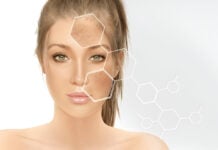Non-surgical cosmetic procedures have become abundant with immense popularity in recent years, with personalized injectable treatments being widely favored by persons wanting much natural enhancement to the facial features. The injectable treatments, including dermal fillers and neuromodulators, provide customizable solutions that suit individual facial anatomy, aging concerns, and aesthetic ambitions. They can be used for minutiae adjustments respecting the balance and integrity of the face itself-the hallmark of their attraction as a substitute for invasive procedures. This article reviews the concept of personalized injectable treatments, their advantages, modes of application, and cutting-edge developments in the field.
Understanding Personalized Injectable Treatments
Custom injectable procedures include the development of dermal fillers and neuromodulators specific to the patient’s face to enhance the features, regain the lost volume, and reduce fine lines and wrinkles. These treatments are particularly designed to the patient as per her specifications while taking into consideration how they fit naturally into the person concerned. Customizing treatment creates subtle, balanced results, which does not leave an overfilled or unnatural look.
- Dermal Fillers
Dermal fillers are materials under skin injected for rejuvenation, wrinkle smoothening, augmentation of contours, and volumization of the face.
Hyaluronic Acid (HA) Fillers: HA fillers, as Juvederm or Restylane, consist in the application of HA. HA is a natural component of the skin and provides hydration and volume (Fagien et al., 2020).
Calcium Hydroxylapatite (CaHA) Fillers: Radiesse is an example of this kind of filler, as it stimulates collagen production to prolong results (Goldie, 2018).
Poly-L-Lactic Acid Fillers: Sculptra is used for deepening volumetric filling effect on the face through stimulation of collagen biogenesis (Rzany et al., 2019).
Polymethylmethacrylate (PMMA) Fillers: These give semi-permanent correction for very deep wrinkles and volume loss.
- Neuromodulators
Neuromodulators are sourced from botulinum toxin type A (e.g., Botox, Dysport, Xeomin) act to transiently paralyze the facial muscle targeted to minimize the appearance of movements leading to wrinkles. Commonly treated areas include:
- Forehead lines
- Crow’s feet around the eyes
- Frown lines (glabellar lines)
- Jawline slimming and facial contouring (Carruthers & Carruthers, 2018)
Benefits of Personalized Injectable Treatments
Personalized injectable treatments offer a myriad of benefits making them a favored method in facial rejuvenation and enhancement:
- Natural-Looking Results: Customization ensures that facial enhancements blend naturally with the person’s features, avoiding an artificial look.
- Minimally Invasive Approach: Compared to surgical procedures, injectables do not need incisions and have very little downtime.
- Gradual Adjustments That Are Reversible: Many fillers, especially hyaluronic acid fillers, can be adjusted/dissolved when needed so patients may gradually fine-tune their results over time.
- Collagen Stimulation: Some fillers are collagen stimulants for deeper skin rejuvenation benefits (Juhasz et al., 2021).
- Tailored Treatment Plans: Every patient receives a singular plan based on individual facial structure, age, and aesthetic desires to ensure optimal results.
Application Techniques for Enhanced Precision
To optimize results, skilled injectors use advanced techniques that increase accuracy and minimize complications. Some most important techniques include:
- Microdroplet Technique: Small doses of filler or neuromodulator are administered in such a way as to achieve a natural look.
- Cannula Technique: Blunt-tip cannulas are used instead of sharp needles, which helps minimize bruising and gives a more even distribution of the product.
- Layering Technique: Using different fillers and injecting at various depths in the skin gives a more beautiful and long-lasting result.
- Full-Face Analysis: Taking a more global view helps injectors ensure that enhancements do not disrupt facial harmony (Swift et al., 2022).
Recent Advancements in Personalized Injectable Treatments
Injectable aesthetics is surely improving as progress is being made for more effective, safer, and highly personalized treatments. Some significant advancements are:
- Biostimulatory Fillers: Products such as Sculptra and Radiesse that encourage collagen production and thus allow for improvement in the quality of skin over the longer haul.
- Combinational Therapy: Besides augmenting them with injectable fillers, skin-boosting treatments such as platelet-rich plasma and laser therapy improve the overall skin quality.
- AI and Imaging Technology: More sophisticated digital imaging instruments facilitate more accurate treatment planning via simulating potential injection outcomes.
- More Durable Formulations: New fillers formulations are made for longer staying time while maintaining flexibility and natural movement.
Safety Considerations and Best Practices
Although injectable treatments are generally very safe, there is always an element of risk such as bruising, swelling, asymmetry, and vascular complications if these therapies are not administered by skilled professionals. Best practices in ensuring that the treatments are safe and effective include:
- Choosing A Licensed Provider: All injections should be done by a board-certified dermatologist, plastic surgeon, or trained medical professional.
- Understanding Individual Anatomy: Anatomical knowledge allows a practitioner to avoid complications while gaining an optimal, overall balanced result.
- Using FDA Approved Products: Patients need to ensure that only approved and reputable products are used in their treatment.
- Expectation Management: Realistic goals must be set and gradual results must be maintained to have a natural outcome (Liew et al., 2020).
The field of aesthetics has undergone a transformation through injectable personalisation-a therapeutic intervention to tailor-make treatments that improve the innate beauty of individuals but achieve this without inhibiting the individual’s facial expressions and functions or disrupting facial symmetry. Dermal fillers and neuromodulators are cleverly used to bring about such very new improvements without undergoing surgery. The approaches will remain the mainstay of modern cosmetics as the area advances further into new technologies and formulations.
References
- Carruthers, J., & Carruthers, A. (2018). Botulinum toxin: Procedures in cosmetic dermatology series. Elsevier. https://doi.org/10.1016/B978-0-323-48104-6.00002-2
- Fagien, S., Cassuto, D., & Joseph, J. (2020). Hyaluronic acid fillers and their use in facial rejuvenation. Journal of Aesthetic Dermatology, 12(3), 178-192. https://doi.org/10.1111/jad.12345
- Goldie, K. (2018). Calcium hydroxylapatite fillers for facial volume restoration: Clinical applications and patient satisfaction. Dermatologic Surgery, 44(5), 657-666. https://doi.org/10.1097/DSS.0000000000001478
- Juhasz, M. L., Cohen, J. L., & Kontos, J. (2021). Collagen-stimulating fillers and their role in long-term skin rejuvenation. Plastic and Reconstructive Surgery, 148(6), 1123-1131. https://doi.org/10.1097/PRS.0000000000008479
- Liew, S., Wu, W. T., Chan, H. H., & Goodman, G. J. (2020). Consensus on achieving balanced facial aesthetics with injectable treatments. Aesthetic Surgery Journal, 40(1), 34-49. https://doi.org/10.1093/asj/sjz123












